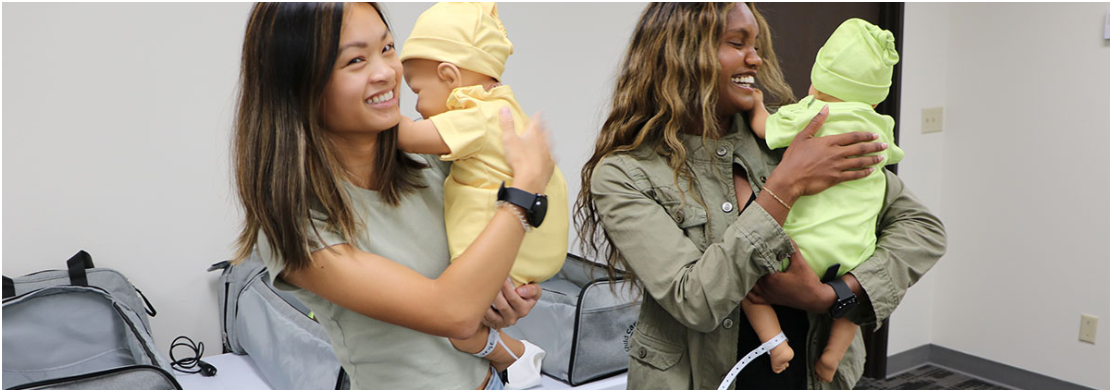CCE Babies’ cheeks light up when they cry, allowing students to see which CCE Baby needs care, even when they can’t hear the cries. This ensures hearing-impaired students can participate in the childcare training simulation and no student’s performance will be affected by excessive noise.
Unfortunately, emergency situations happen in daycare centers, and students in childcare training need to be prepared. To address this need, CCE comes with 9-Month Babies that double as choking trainers. The teacher can initiate choking training directly or include it as part of a simulation. Students must alternate between chest thrusts and back slaps to save the infant.
Removing infant airway obstructions isn’t the only life-saving skill students should learn in childcare training; infant CPR is another vital skill. To address this, CCE comes with 3-Month Babies that double as infant CPR trainers. Students can watch the display on the smart device to see if you’ve got the right compression depth and rate.
While the 3-Month Babies are a little young for solid food, the 9-Month Babies are happy to munch on applesauce and mashed mango from the safety of their highchair. As part of their childcare training, students can log what the Baby ate and how much in the Baby Care Journal part of the simulation to practice keeping parents informed.
Soothing fussy infants is one of the skills students learn in childcare training that they’ll use frequently if they continue with a career in the field. During fussy Care Events, you can rock, walk, or provide nurturing movement to calm the infant. Alternatively, you can properly swaddle 3-Month Babies with their soothing blanket. On the other hand, you must give 9-Month Babies their pacifier. Uncomfortable teaching swaddling in your childcare classes? Simply, don’t schedule fussy Care Events for 3-Month Babies in your simulations to avoid it completely.
FCS teachers can easily customize their childcare training simulations with the pre-installed CCE app. Choose the simulation duration, Care Events, and length and number of Care Events to ensure your students of all skill levels are adequately challenged. Don’t know where to begin? You can generate a random easy, medium, or hard simulation schedule and adjust as needed from there.
In addition to Care Events, you can program infant health and parent communication scenarios into your childcare training simulations. An audio cue will play, and a random scenario will display on the smart device. Students must carefully read through the scenario and write in their response. You can review their scenario and response in the simulation report after the simulation concludes.
At the end of each childcare training simulation, you can review a report on how it went. There are three types of reports: group, student, and Baby. Group reports provide the broadest view of the simulation. In addition, each student has their own report if you want to see how a specific participant did. Finally, the infant simulators have their own report for when you want to see how well a specific CCE Baby was cared for.
- Watch our on-demand webinar all about the CCE program for a complete program walkthrough

